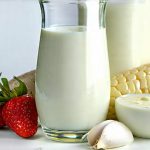Lactose intolerance affects a significant portion of the population globally, yet identifying hidden sources of lactose in our food supply can be surprisingly challenging. Many people associate lactose with obvious dairy products like milk and cheese, but it lurks in countless processed foods where you’d least expect it. This pervasive presence stems from lactose being used as a functional ingredient – a filler, stabilizer, or flavor enhancer – within the manufacturing processes of numerous everyday items. Understanding how to navigate these hidden sources is crucial for individuals managing lactose intolerance or choosing to follow a low-lactose diet.
The difficulty in pinpointing lactose isn’t just about its unexpected locations. Food labeling regulations don’t always require lactose to be explicitly identified, particularly when it exists as an ingredient derived from dairy rather than directly as dairy itself. Furthermore, varying degrees of sensitivity mean that even small amounts of lactose can trigger symptoms for some individuals while others remain unaffected. This article will delve into the common culprits where lactose hides, provide practical strategies for identifying it, and offer resources to help you confidently navigate grocery shopping and dining out. It’s about empowering you with knowledge so you can make informed choices regarding your diet.
Decoding Food Labels & Ingredient Lists
The first line of defense against hidden lactose is becoming a savvy label reader. This goes beyond simply scanning for “milk,” “cream,” or “butter.” Lactose frequently appears in disguise, often as ingredients that sound anything but dairy-related. Whey, casein, and milk solids are common derivatives, but the list extends further. – Dry milk powder – Milk sugar – this is a direct synonym for lactose! – Lactose monohydrate – Hydrolysates (like protein hydrolysate) can sometimes contain lactose – Modified food starch – though not always, it’s worth checking if dairy-derived.
The challenge lies in the ambiguity surrounding these ingredients. Manufacturers aren’t always obligated to specify the source of modified starches or hydrolysates, leaving consumers guessing. Looking at the manufacturer’s website or contacting them directly can provide clarity. Another crucial aspect is understanding “may contain milk” statements. These are precautionary warnings for individuals with severe allergies and don’t necessarily indicate a significant lactose presence. However, those highly sensitive to even trace amounts might want to avoid products with this disclaimer. Always remember that ingredient lists are ordered by weight – meaning ingredients listed higher up are present in greater quantities.
Don’t underestimate the power of online resources. Many websites and apps dedicated to food allergies and intolerances compile comprehensive lists of lactose-containing ingredients and offer detailed product reviews, helping you identify safe options quickly. Finally, be aware that “non-dairy” doesn’t always mean “lactose-free”. It often refers to products made without milk itself but may still contain other dairy derivatives like whey. If you’re struggling with symptoms, consider how to rebuild trust in your body again.
Common Food Categories Harboring Hidden Lactose
Lactose isn’t limited to traditionally dairy-heavy foods. It frequently appears in unexpected categories, making it essential to scrutinize labels across the board. Processed meats, for instance, often use lactose as a filler or binding agent. This applies particularly to hot dogs, sausages, and deli meats. Bread and baked goods are another common source – lactose can be used to improve texture, browning, and softness. Even seemingly safe options like sourdough bread can sometimes contain dairy derivatives.
Beyond these examples, consider the following: – Instant soups and sauces frequently utilize milk solids or whey for thickening. – Salad dressings, particularly creamy varieties, often contain hidden lactose. – Breakfast cereals – some are coated with a milky glaze. – Medications (both prescription and over-the-counter) can use lactose as a filler. – Protein powders and meal replacement shakes commonly incorporate whey protein concentrate or isolate.
The key takeaway is that vigilance is paramount. Don’t assume a food is safe just because it doesn’t seem like it should contain dairy. A thorough ingredient list review is always necessary, even for products you’ve purchased before, as formulations can change without notice. This requires developing a habit of reading labels diligently and becoming familiar with the various forms lactose can take. Sometimes, introducing new foods to a sensitive system is the hardest part.
Navigating Restaurant Dining & Takeout
Eating out or ordering takeout presents unique challenges when managing lactose intolerance. Unlike packaged foods with ingredient lists, it’s difficult to know exactly what’s in restaurant dishes. Clear communication is essential. Don’t hesitate to explain your dietary restrictions to the server and ask specific questions about ingredients and preparation methods. – Inquire whether dairy is used in sauces, marinades, or frying oil. – Ask if substitutions are possible (e.g., using olive oil instead of butter). – Be mindful of cross-contamination – even a small amount can be problematic for highly sensitive individuals.
When ordering takeout, the same principles apply. Many restaurants now offer online menus with detailed ingredient information. If this isn’t available, call ahead and speak to someone who can answer your questions. Be particularly cautious with Asian cuisine, as dairy products are sometimes used in sauces or marinades unexpectedly. Furthermore, be aware that seemingly “safe” options like steamed vegetables may have been prepared using butter or milk. Don’t be afraid to request modifications – a good restaurant will accommodate your needs. It’s important to advocate for yourself when dining out, too!
Understanding Lactose-Free Alternatives & Enzymes
Fortunately, many lactose-free alternatives are readily available in most grocery stores. These include: – Lactose-free milk and yogurt – these products have been treated with lactase enzyme to break down the lactose. – Plant-based milk alternatives (almond, soy, oat, coconut) – these provide dairy-free options for various dietary needs. – Hard cheeses aged over six months – naturally contain very little lactose due to the aging process.
In addition to substitutions, lactase enzyme supplements can be a helpful tool for individuals who accidentally consume lactose or want to enjoy small amounts of dairy without experiencing symptoms. These supplements work by providing your body with the enzyme it needs to digest lactose. They come in various forms (tablets, capsules, drops) and are typically taken before consuming dairy products. However, it’s important to note that lactase enzymes aren’t a substitute for avoiding lactose entirely; they merely help manage its effects. Understanding gut resilience can also make a difference in how your body reacts.
Resources & Further Information
Numerous resources can provide additional support and information on managing lactose intolerance: – The National Digestive Diseases Information Clearinghouse (NDDIC) offers comprehensive information about lactose intolerance and related conditions. – Food allergy and intolerance websites, such as FARE (Food Allergy Research & Education), often have detailed ingredient guides and product reviews. – Registered dietitians specializing in food allergies and intolerances can provide personalized dietary advice. – Look for those with experience helping people manage lactose issues.
Remember that managing lactose intolerance is a learning process. It requires patience, diligence, and a willingness to advocate for your own needs. By understanding hidden sources of lactose, decoding food labels, and utilizing available resources, you can confidently navigate your diet and enjoy a wide range of foods without compromising your well-being. For children struggling with similar issues, consider how to help them build trust in food again, too. And if stress seems to play a role, learn how to spot stress-driven belly aches. Finally, don’t forget the importance of liver-supportive foods for overall digestive health!


















